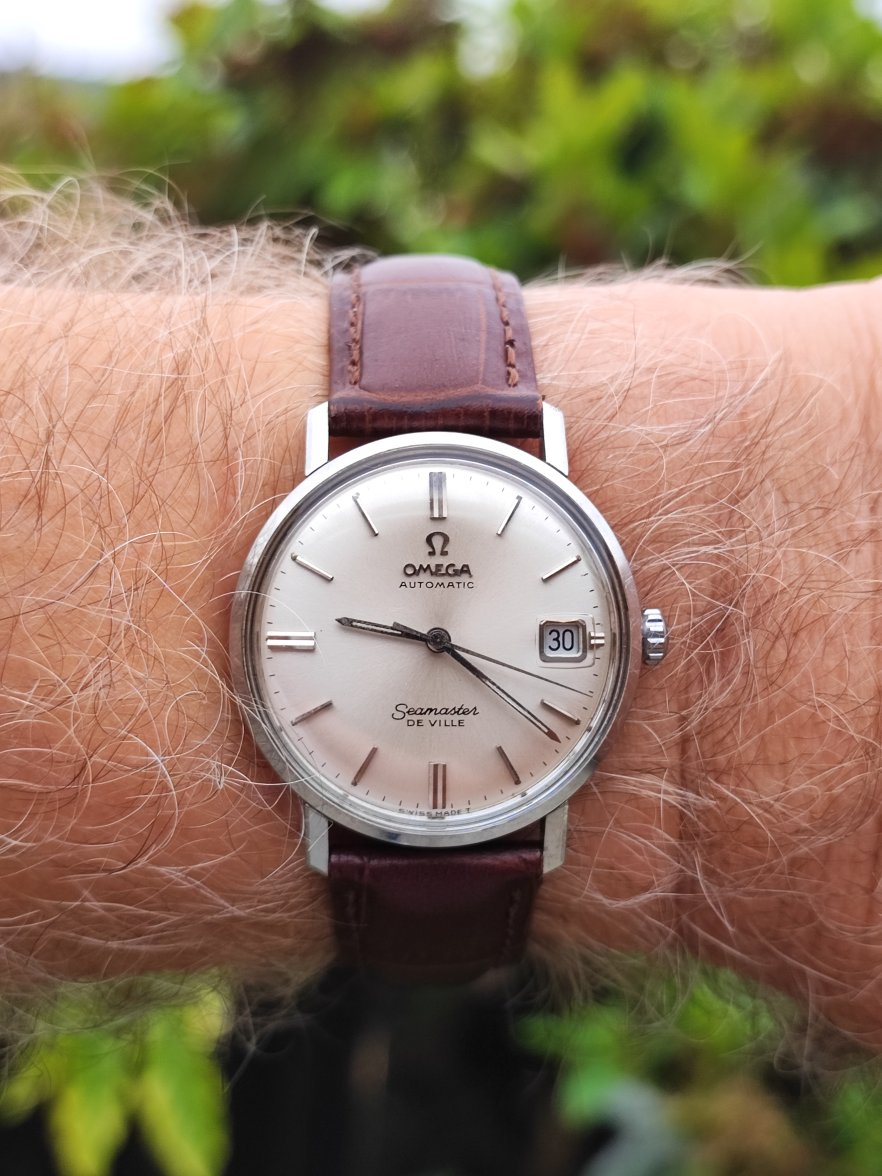Many of the watches I have been playing with have sat in a drawer for anywhere from 18 to 28 or so years. Every so often I would look at them. Many I forgot exactly when or where I got them. Of course I keep the Omegas in a separate box in a different drawer. Some I serviced myself in the 1990s. Others I have never touched.
The speedy still runs. But I do not use it much. I stopped wearing it when the crystal got scraped. Sometime I would like to get it a good professional service. Same goes for the chronostop. I still wear the seamaster often, but have noticed wear on the strap in the recent posted photographs.
I notice some of the watches still run some do not. There are so many factors involved.
Mostly the OP question seems academic. The tone seems to be directed more to the higher end watches with intrinsic value. Tastes and fashion does change. At one time most companies had 30 year plans. Now they seem to have 30 minute plans. Predicting the next 30 could be diffucult. Just look at the last 3 years.
It is easy to see ages when looking back in history. The 1790s were much different than the 1840s, yet many of the same people were alive in both years. When I came into the world, anyone that would be my age now or older were pretty much born in the late 19th or early 20th centuries. My grandmother would talk of horse and buggys to moon rockets. They saw a lot of change in 60 or 70 years.
How does one predict what things will do. When I was little computers occupied whole rooms. Now they fit in our pockets. The activating parts smaller than many watch components. One of the factors that did drive this miniaturization was watches. Curiously the machines used to assemble such devices came from 8mm cine film. When Video tape replaced home movies the film reels and transports became obsolete. Yet some clever person (I have an article somewhere that says it was the swiss watch industry.) repurposed such reels and transports for automated assembly. This is called SMT for surface mount technology. But the contemporary article called it Swiss Manufactue Technique (or the french equivalent.)
To most people such changes are basically magical. They were one way one day, and something completely different years later. No one can even agree as to when or where the transition happened. Often the same thing happens independently in different parts of the world. It is probable that someone in Japan also thought to adapt cine film transports to feed robot assembly lines.
Or as the Wright brothers said. "When it is time to build bicycles, people build bicycles."
Babbage's computer plans sat in a drawer for more than 150 years. No one could understand them till the 1970s and No one bothered to build the machines til the 1990s. The only reason they came to light, was patent litigation. Who really invented the computer?
What then happens when you put a cell phone in a drawer for 30 years. Or look at the value of an electronic watch from 30 years ago?
I squirreled away some LPs and some 12 inch laser discs. The LPs can be played optically. I guess someone could figure out the analog PWM used on the laser disks (apart from they rot and the machines have a hard to play on the original equipment.) CDs use a different technology. I probably have some CDs stuck in a drawer. Now everything is in the 'cloud.' Good luck accessing your virtual watch skins in 30 years.
And yes, I do have a folding bicycle hung from the ceiling in my workshop. Tires are flat and the chrome rusted. Should get it restored some day.
(the midnight poster strikes again.)

